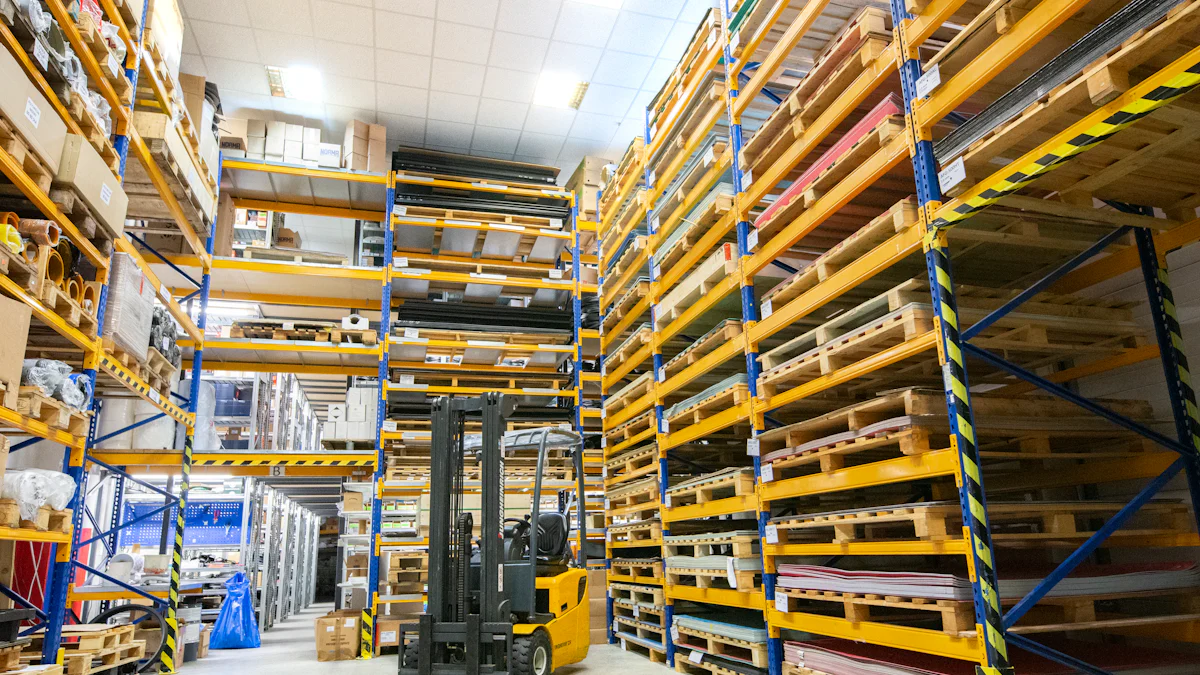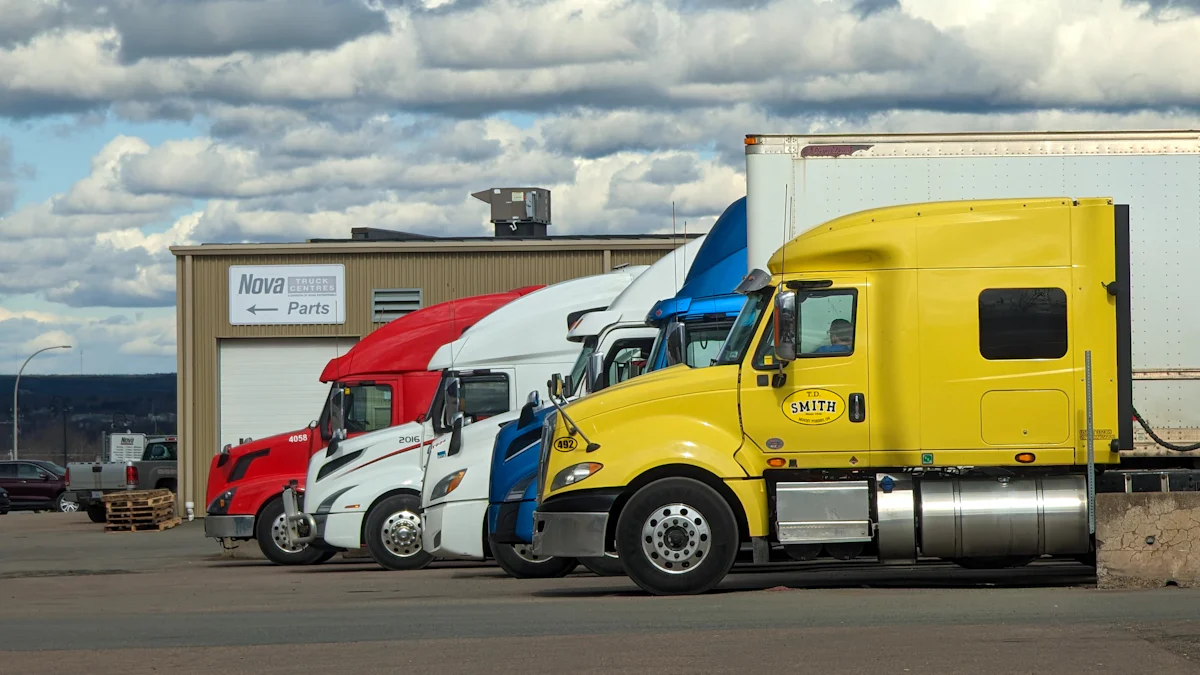
Semi-electric stackers play a crucial role in warehouse operations, offering flexibility and efficiency in narrow spaces for stacking and transporting goods. These vehicles are essential for optimizing material handling processes and ensuring worker safety. Today, manufacturers will delve into the maintenance of Pallet Jack batteries, a critical aspect of these stackers’ upkeep.
Understanding Semi-Electric Stackers
When operating a semi-electric stacker, it is essential to understand its components and functionalities. The stacker comprises various parts that work together seamlessly to lift and transport goods efficiently. By comprehending these elements, users can maximize the stacker’s performance.
What is a Semi-Electric Stacker?
Definition and basic functionality
A semi-electric stacker is a versatile material handling equipment designed for lifting and moving heavy loads in warehouses and factories. It combines manual maneuvering with electric lifting capabilities, offering a practical solution for various stacking tasks. The stacker’s primary function is to elevate pallets or goods to different heights with ease and precision.
Key components and operation
The electric stacker consists of key components such as the mast, forks, hydraulic system, control panel, and battery. The mast provides vertical support for lifting operations, while the forks securely hold the load during transportation. The hydraulic system controls the lifting mechanism, ensuring smooth and controlled movements. Users can operate the stacker using the intuitive control panel, adjusting height settings and direction effortlessly. The battery powers the electric motor for efficient lifting without manual effort.
General Uses in Warehouses and Factories
Common applications
Semi-electric stackers are commonly used in warehouses and factories for tasks like loading/unloading trucks, organizing inventory on shelves, and transporting materials within confined spaces. Their versatility makes them ideal for various industries requiring efficient material handling solutions.
Advantages over manual stackers
Compared to manual stackers, electric stackers offer increased productivity and reduced physical strain on operators. The electric lifting mechanism enables faster stacking operations with higher precision, enhancing overall workflow efficiency. Additionally, semi-electric stackers are easier to maneuver in tight spaces due to their compact design and powered operation.
Detailed Comparison of Different Models

When evaluating electric stacker models, it is crucial to consider their unique specifications, features, and benefits. Each model offers distinct advantages tailored to specific warehouse and factory requirements.
APOLLOLIFT 3300 lbs. Fixed Legs Semi Electric Stacker
Specifications
- Maximum Load Capacity: 3300 lbs.
- Lifting Height: Up to 118 inches
- Power Source: Electric
- Weight: 1100 lbs.
Features
- Fixed Legs Design for Stability
- Adjustable Forks for Versatile Use
- Intuitive Control Panel for Easy Operation
Benefits
- Enhanced Efficiency in Stacking Operations
- Improved Safety Measures with Stable Design
- Versatile Applications in Various Industries
NOBLELIFT Semi-electric Straddle Stacker
Specifications
- Maximum Load Capacity: 2500 lbs.
- Lifting Height: Up to 98 inches
- Power Source: Electric (12V/150AH Battery)
- Weight: 990 lbs.
Features
- Straddle Design for Handling Pallets of Different Sizes
- Maintenance-Free Battery for Longevity
- Ergonomic Handlebar for Operator Comfort
Benefits
- Powerful Performance with High-Torque Motor
- Efficient Battery Management System for Extended Use
- Increased Maneuverability in Confined Spaces
HSE1000/3 Semi-Electric Stacker
Specifications
- Maximum Load Capacity: 1000 kg (2204.62 lbs.)
- Lifting Height: 85 – 3000 mm
- Power Source: Electric
- Weight: 700 kg
Features
- Adjustable Forks for Diverse Applications
- Compact Design for Narrow Aisles
- User-Friendly Controls for Precision Handling
Benefits
- Cost-effective Alternative to Forklift Trucks
- Easy Maintenance and Serviceability
- Safe and Efficient Material Handling Solution
HE1200/3 Electric Stacker
Specifications
- Maximum Load Capacity: 1200 kg
- Lifting Height: Ranges from 86 to 3000 mm
- Power Source: Electric
- Weight: Approximately 850 kg
Features
- Adjustable Forks for Versatile Handling
- Ergonomic Operator Controls for Precision Movements
- High-Speed Performance of up to 4.2 km/h
Benefits
- Increased Efficiency in Lifting Operations
- Enhanced Safety Measures for Operators and Goods
- Suitable for Various Industrial Lifting Tasks
Tora-Max Electric Pallet Stacker 2TSB26
Specifications
- Maximum Load Capacity: 1000 kg
- Lifting Height: Up to 2600 mm
- Power Source: 24V Lithium-Ion Battery with Built-In Charger
- Weight: Around 700 kg
Features
- Compact Design for Maneuverability in Confined Spaces
- Built-In Charger for Convenient Charging Anywhere
- Operator-Friendly Controls for Easy Operation
Benefits
- Efficient Indoor Performance with Lithium-Ion Technology
- Improved Productivity Due to Quick Charging Capabilities
- Enhanced Durability and Longevity of Battery Life
Semi-Electric Straddle Leg Stacker
Specifications
- Maximum Load Capacity: 800 kg
- Lifting Height: Adjustable from 85 to 2500 mm
- Power Source: Electric with Built-In Battery Charger
- Weight: Approximately 600 kg
Features
- Straddle Leg Design for Stability and Versatility
- Battery Gauge and On/Off Key Switch for User Convenience
- Operator Protection Screen for Enhanced Safety
Benefits
- Increased Stability During Material Handling Operations
- User-Friendly Controls Promoting Ease of Use
- Enhanced Safety Features Ensuring Accident Prevention
Key Considerations When Choosing a Semi-Electric Stacker
Load Capacity
Matching capacity to needs is crucial when selecting a semi-electric stacker. It ensures that the stacker can efficiently handle the intended loads, optimizing productivity and safety in warehouse operations.
Battery Life and Charging
Factors influencing battery performance play a significant role in the operational efficiency of an electric stacker. Understanding these aspects helps in maximizing uptime and reducing downtime for charging.
Maneuverability and Ease of Use
Design features that enhance usability are essential considerations when choosing a semi-electric stacker. These features contribute to seamless operation, improving overall workflow efficiency and operator convenience.
- In summary, factors like overcharging and limited maintenance significantly impact the battery life and overall performance of semi-electric stackers. Users’ awareness of proper battery maintenance is crucial to avoid premature wear and maintain optimal efficiency. Additionally, considerations such as channel width play a vital role in selecting the right stacker model, affecting maneuverability and cost-effectiveness. Manufacturers offer tailored guidelines to assist in choosing the most suitable semi-electric stacker based on specific needs and operational requirements.
Post time: Jun-25-2024
